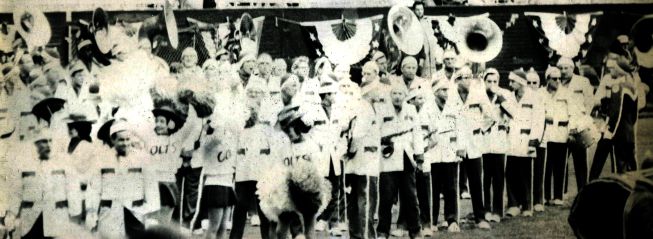Fans of the Baltimore Ravens: A Little-Known Story
There's much talk about which fans are the most loyal and dedicated to their team. Much is said about the suffering fans of the Jets or the Bears (obviously not those from Philly, known for booing their players without hesitation). I'm going to advocate for the fans of the Baltimore Ravens, with a little-known story about the band that refused to stop playing.
Baltimore, Maryland, 1984. Robert Irsay is the owner of the Baltimore Colts. Few of you may know Robert Irsay, but to say that he was an irate, arrogant, and above all conceited person wouldn't be an exaggeration. Since 1969, the Colts' previous owner, Rosenbloom, had started a campaign to get a new stadium because the old Memorial Stadium wasn't up to par for high-level competition. They also had to share it with the Baltimore Orioles. In 1971, the mayor of Baltimore commissioned a study of the stadium to prove that it was more than competent, but it showed that the stadium sided with both teams. In 1974, the mayor agreed on a plan to build a new field, but the state of Maryland refused to pay for it and the idea died. No one wanted to use public money to pay for the whims of the two owners (very common in the USA, I also want a new stadium every 10 years!)
From that day, rumors started to spread that the Colts were going to leave the city (and the Orioles as well, but that's another sport, strike one!). Most of all because Irsay was not a discreet man and was publicly seen with the mayors of Los Angeles, Phoenix, Jacksonville, and Indianapolis, who at that time didn't have teams (or anything for that matter, well, more or less now). Since 1980, Irsay denied daily that the team would leave Baltimore. The last time he denied it was on the night of March 28 at Baltimore Airport. That same early morning on March 29, just 5 hours after the last time Irsay denied the team's move, 70 moving trucks entered the team's facilities in Owings Mills and took everything, even the carpets (and obviously the trash on them, literally). Cowardly, in the middle of the night, Baltimore was left without a football team; the Colts became the Indianapolis Colts.
Here begins the struggle of our band. In the NFL, there are only two marching bands, which are much more common in college football: the Washington Redskins Marching Band and the Baltimore Colts Marching Band. The band leaders had been informed a week earlier that the team would move, so they had time to maneuver. The instruments belonged to the band members, but the uniforms did not; they belonged to the team. As luck would have it, since it was the end of the season, the uniforms were being washed. John Ziemann, the band's president, contacted the owner of the dry cleaning where the uniforms were being washed and told him about the team's situation (they were moving and taking the uniforms with them; the band wouldn't allow it). The dry cleaning owner told them that legally he couldn't give them the uniforms, but discreetly informed them that sometimes he leaves the van of the dry cleaning open with the keys in the glove compartment, and that that night would be a nice time to take a van ride. A hint is enough for a wise man. That night, John took the van for a ride, with all the clean uniforms in the back, and they took them. The thing was that A) The Colts were looking for the uniforms, and B) they didn't know where to hide them. A band member came up with the idea of hiding them in the family tomb. And there they were. After months of fighting, which almost ended in a fight between Irsay and the band, Irsay's wife called the band and told them they could keep the uniforms. The Colts fled from Baltimore and took everything with them, except the uniforms. That piece of Colts history would remain as a resilient ghost haunting the city.
For 11 years, the band continued to take to the streets and perform the same routine they did on game days for the Colts, without having a team to cheer for. They did it as a protest to demand a team in the city. That's how they became the official ambassadors of the city in the fight to get an expansion team. Other teams took notice of this and invited the band to perform when they played against the Colts ("and when they didn't. They were cheap entertainment," said one of the team owners). This created an atmosphere of thrill and protest against the Colts. Ironically, the city that supported them the most was Cleveland. Art Modell and his son David Modell, owners of the Browns, always wanted a band and often hired the band from Baltimore to perform during halftime.
In 1993, the city of Baltimore and the state of Maryland agreed to build a stadium, and the Browns announced that they were leaving Cleveland and moving to Baltimore, which they accomplished in 1996 (the current Cleveland Browns are an expansion team granted almost immediately by the league to the city, but equally tormented as the other. God, I hate Cleveland, chapter 20,000). The band didn't know if they counted for the new owners, so they set a trap for David Modell on a TV set. John Ziemann entered to the applause of those present, and he asked Modell if he had plans to make the band the official band of the new Ravens. Modell smiled and replied, "Dear John, I thought you already were."

